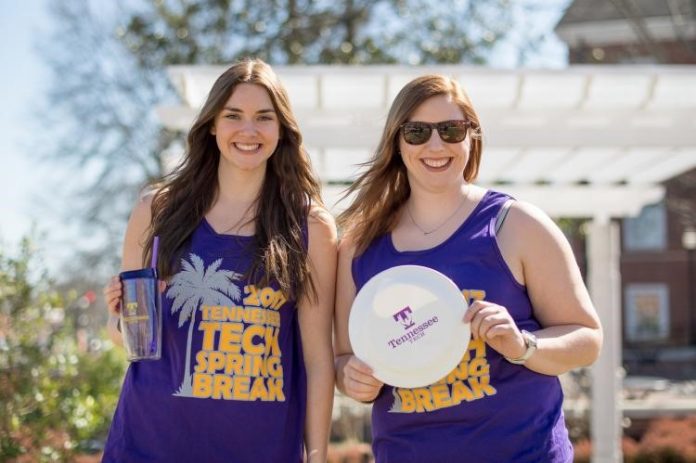The start of a new academic year tends to be a highly ritualized affair, from campus-wide “Welcome Week” activities down to the icebreakers and syllabi distributions in individual classrooms. For graduate teaching assistants, this is the time when we introduce ourselves, lay out our expectations, and, hopefully, establish the tone and level of authority that we want to convey throughout the term.
Unfortunately, as my formulaic first paragraph might show, First Days of School tend to be predictable without much conscious deviation. The whole process risks coming off as a little too scripted or dispassionate, particularly in the case of veteran teachers who might have been delivering the same First Day spiel for the same course for several semesters. Undergrads recognize these rote recitations as Syllabus Week: a period of dull, repetitive preambles to actual course content that can be easily skipped, provided you don’t wish to learn the exact number of Jennifers in the class (four) or hear yet another articulation of the university’s plagiarism policy (it’s bad).
There isn’t any reason your class needs to follow this trend, so here are a few ways you could tweak your first-day routine for a more productive, engaging First Day:
Start sooner. What if the first day of class wasn’t actually your class’s First Day? Before you accuse me of going full-on galaxy brain, let me explain. There is not, nor should there be, any hard-and-fast rule requiring that the first day of school also be your first contact with your class. Assuming you gain access to a list of your students’ email addresses before classes start, you have a chance to knock off some of your First Day rituals prior to the actual first day, in a low-stakes interaction that allows students to consume the introductory information about the class at their preferred pace in their preferred setting. I usually find somewhere between 48 and 72 hours before the first day of class is a good time to drop this email, though I increase that number for courses where my First Day involves assigned reading.
By moving your First Day before the first day, you don’t have to cram a syllabus review, your advice on how to succeed in the class, icebreakers, and even some academic material into the first 50-minute discussion section. This approach also creates some practical benefits for students: information like your office hours schedule become readily searchable in their inboxes and anyone still on the fence about dropping the class is reminded of the deadline for that decision.
Once you’re in the classroom, learn the information you actually need to do your job instead of relying on hackneyed icebreakers. No professor of mine has ever had to recall my favorite breakfast cereal, the last movie I saw, or any other tidbit of minutiae that students are typically asked to recite, one by one, on First Days. All of my professors, on the other hand, have had to recall my name. Those that had bizarre obsessions with cereal preferences rarely performed well at this.
Now that I am the teacher, I recognize that compiling lists of who saw Black Panther and who saw Infinity War will not help me tell Michael W. and Michael T. apart. To get around this, in classes of around 30 or fewer students, I ask each student to tell me something about themselves that is so memorable I cannot help but immediately recall their name in class the following week. This gives students the opportunity to distinguish themselves and, most importantly, it works! I don’t know much biographical information about my student who was missing a fingertip because a horse bit it off, but you can bet your last dollar I will never forget her name. Don’t be afraid to nudge those who try to claim there is nothing memorable about them; the guy who “likes basketball” will remain anonymous well past Veterans’ Day, but the guy who wore Carmelo’s jersey for a week straight in elementary school will quickly have a name.
If you’re teaching a larger class where there simply isn’t time to hear who has been disfigured by which animals, you can still have a model interaction with one or more students. In a bigger class, my First Day involves introducing myself to the class, explaining whatever logistical details I think bear repeating, and then introducing myself again, usually to some unlucky soul who happened to sit in the first row. A handshake, a quick conversation about his or her course schedule or interest in the subject matter at hand, and voilà, I’ve demonstrated to everyone in the room what sort of teacher-student dynamic and classroom atmosphere I’m aiming for. Ideally, this will also demonstrate your approachability to students and you’ll have further opportunities for one-on-one interaction before class, in the hallways, and during office hours.
Finally, teach something! Reviewing her First Day routine, GradHacker Amy Rubens described herself as “dead-set against” any First Day that doesn’t include learning. I concur fully. First Days occur at a special time in the academy’s circadian rhythm: every topic is new, everyone is fresh, and everything is awesome. Your students’ curiosity and energy will be relatively high and unfettered by the frustration and fatigue that tends to set in by the first week of November—take advantage!
The same goes for you. Don’t be afraid to really bring it, in terms of energy and enthusiasm on the First Day. This is a chance for students to see your passion for the curriculum before your own mid-semester weariness creeps in. For example, I have students in my introductory reporting class interview each other on the first day. When the unprepared, untrained reporters inevitably fail to discover their peers’ most interesting characteristics, the stage is set for a conversation about which interview techniques are more successful than, say, the Morrison Method. Whatever your approach, it doesn’t have to be formal, rigorous, or graded so long as it creates a little momentum before the serious academic work begins.

